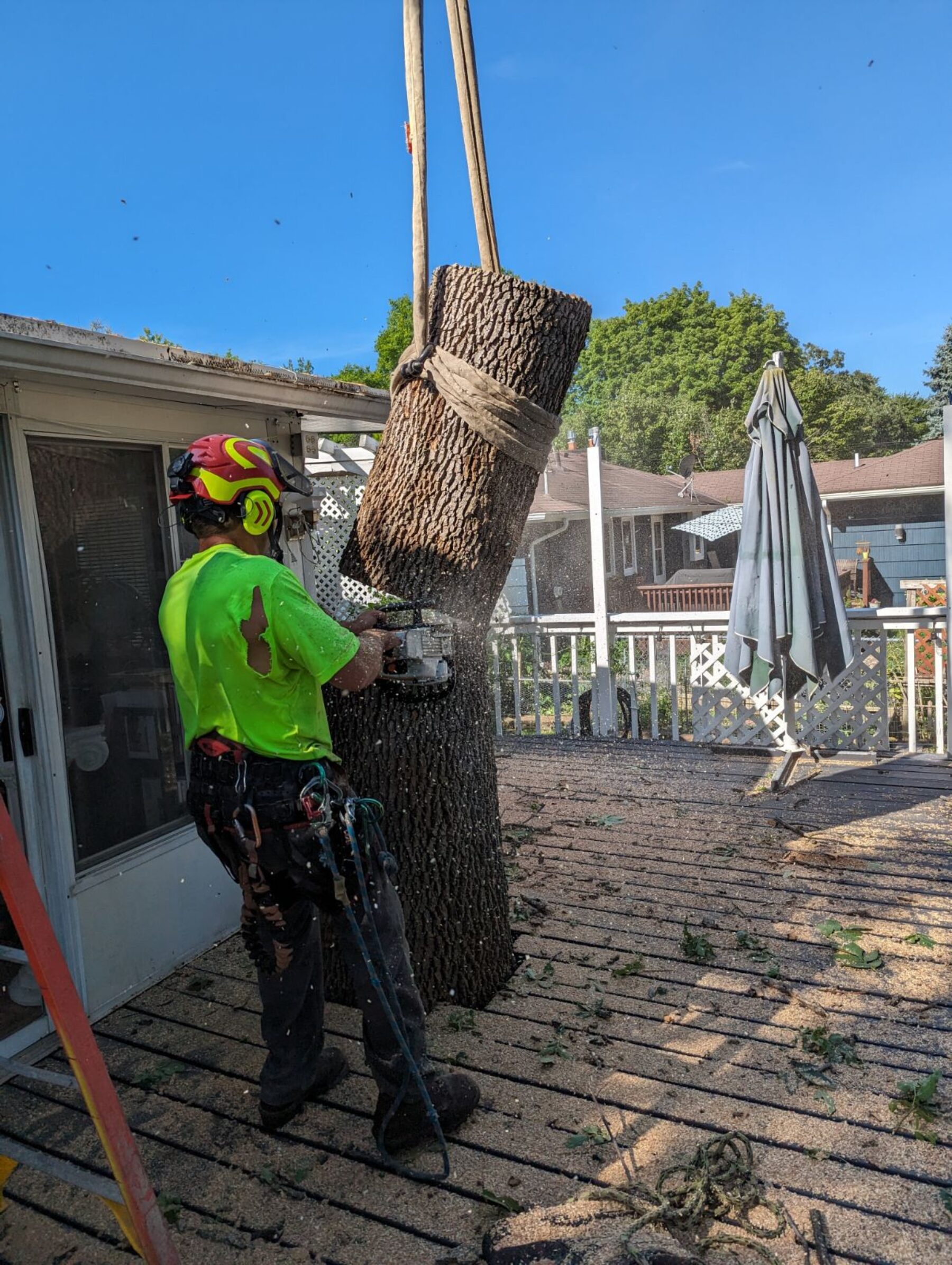
How to Safely Remove Large Oak Trees Near Structures
Removing a large oak tree is no small task—especially when it’s located close to a house, garage, fence, or other structure. These trees can weigh several tons, and their sprawling branches and deep root systems demand careful planning to avoid damage. Whether the oak is declining, storm-damaged, or simply outgrowing its space, safe removal starts with the right timing, tools, and team.
This guide walks through key considerations when removing a mature oak tree near structures, including seasonal timing, equipment planning, and property protection.
Why Oak Trees Near Structures Pose Unique Challenges
Mature oaks are among the largest trees in Minnesota, with wide canopies and deep roots that often extend beyond the dripline. When these trees are close to homes or garages, their size can create several challenges:
- Limited drop zones for limbs or trunk sections
- Risk to siding, roofing, or gutters from falling branches
- Disruption to underground utilities or foundations
- Difficulty using heavy equipment in tight urban or suburban spaces
Removing an oak tree in these conditions requires more than a chainsaw—it requires precision rigging, structural awareness, and a crew experienced in complex removals.
When Is the Best Time to Remove an Oak Tree?
The ideal time to remove an oak tree is during the dormant season, between November and March, when the risk of spreading oak wilt is lowest. This fungal disease spreads more easily in spring and summer when beetles are active and fresh wounds are more vulnerable.
If the tree is declining, storm-damaged, or leaning toward a structure, you may not be able to wait until winter. In these cases, emergency removal may be necessary, but all cuts should be sealed promptly, and care should be taken to minimize the risk to surrounding oaks.
How to Prepare for Tree Removal Near a Structure
1. Get a Site Assessment
Every property is different. A removal plan should start with an on-site evaluation to assess access, tree stability, nearby structures, and safety concerns.
2. Consider Equipment Access
Tight spaces may require climbing-based removal or the use of aerial lifts or cranes. In some cases, sections of the fence may need to be removed, or matting laid to protect lawns or landscaping.
3. Plan for Debris and Cleanup
Large oaks generate significant debris. Wood chips, limbs, and trunk sections need to be carefully lowered, staged, and removed from the site without damaging surrounding areas.
4. Check for Local Restrictions
Some cities or HOAs may require permits or pre-approval for removing large trees, especially near public property or in conservation zones. It’s always best to check local ordinances before starting.
Safety Comes First in Close Quarters
Removing a tree near a structure isn’t just about cutting—it’s about controlled takedown. This often involves:
- Rigging limbs to be lowered by rope instead of free-falling
- Cutting sections in stages to avoid uncontrolled collapse
- Ground crews managing drop zones to keep structures and people safe
- Spotters and communication tools to coordinate timing and motion
We use tree removal techniques for tight spaces that are designed specifically for high-risk takedowns—ensuring both your property and your crew remain protected.
What Happens After the Tree Is Removed?
After removal, you may also want to consider:
- Stump grinding to reclaim the space for lawn or new plantings
- Root zone cleanup if the tree was lifting sidewalks or patios
- Replacement planting with a smaller, better-suited species
Fall and early spring are both good times to install new trees, allowing them to establish roots before summer heat returns. If you have a large oak tree growing too close to a home or structure, don’t wait until it becomes a liability. The right removal—done at the right time—can reduce risk, prevent storm damage, and open up new options for your landscape. Schedule a consultation this fall to start planning a safe and effective removal before winter or spring storms arrive.